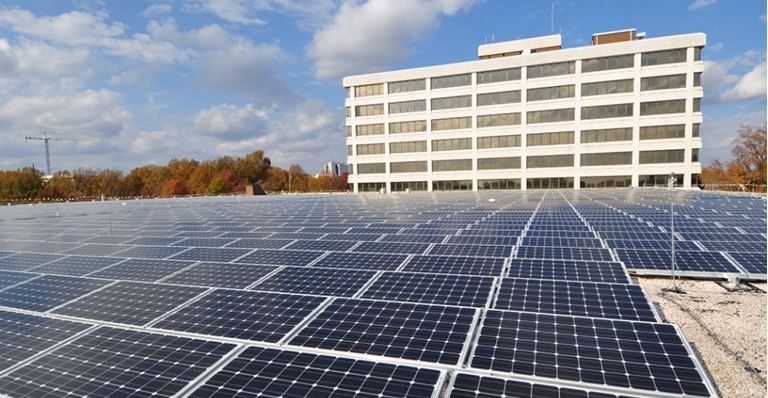An innovative financing structure, set up in 2002 to enable businesses in the Australian state of Victoria to invest in sustainable infrastructure, is now going national. The Sustainable Melbourne Fund (SMF) and Bank Australia have introduced a new A$200 million ($139 million) loan facility that offers commercial-industrial and agricultural businesses throughout the country the opportunity to cost-effectively upgrade their operations for environmental benefit.
“About 80% of our projects by number are rooftop-mounted solar projects, and they range in scale from 15 kW to 1.5 MW rooftop-mounted arrays,” said Scott Bocskay, who was CEO of the SMF until recently.
The scaling up of the fund’s operations has been driven by an increase in interest, Bocskay told pv magazine. “We’re seeing a phenomenal growth in businesses looking to install solar, and much bigger businesses are now interested,” he explained, adding that such businesses have “traditionally used bulk purchasing to achieve a lower cost of energy per unit”.
The rapidly decreasing cost of solar generation, combined with increased energy prices and the highly favorable terms of the Sustainable Australia Fund’s Environmental Upgrade Finance packages, are driving commercial decisions by bigger businesses to install rooftop PV systems. Recent loan recipients include transportation firm Booth Transport, food manufacturers such as Tibaldi Smallgoods, and agri-businesses such as Integrity Fruit.
Through the Sustainable Australia Fund, fixed-interest loans for terms of up to 20 years are available to businesses that occupy land rated for non-residential use, in council areas that offer Environmental Upgrade Agreements (EUAs). These agreements are enabled by state-based legislative adjustments to the Local Government Act, which have been taken up by the states of Victoria, New South Wales and South Australia.
Under an EUA, a business or commercial property owner can apply for a discounted loan for building upgrades that include solar power, energy and water efficiency measures, as well as other environmental improvements. Any council in the three states can adopt the amendments that enable repayments on the loans to then be made as a component of the rates paid by the business or landholder.
Currently 32 councils in Victoria, six councils in NSW and four councils in South Australia have taken up the legislative changes. Bocskay said that the Sustainable Australia Fund is keen to work with other state governments to unlock the increased opportunities offered by the fund.
“We’re proud to support the launch of the Sustainable Australia Fund, to enable it to expand its impact across Australia, which aligns with our purpose of creating positive impact for people and the planet,” said Darren Dawson, head of impact finance at Bank Australia.
Bank Australia also recently revealed that it has achieved 100% renewable energy use in its own operations, a year ahead of its commitment to reach that goal by 2020.
“Bank Australia is very progressive and keen on the work that we’re doing,” said Bocskay of the new partnership. Previously, the SMF had sourced financing through the Clean Energy Finance Corp. and the City of Melbourne.
Commercial and environmental decisions
In November 2018, Tibaldi Smallgoods received loan support from the SMF for the installation of a A$1.4 million, 1 MW rooftop solar system at its premises in Clayton in Victoria. It is expected to result in annual electricity savings of A$339,000.
Tibaldi CEO, Greg Ridder, said the company’s investment would also “provide environmental benefits by reducing our reliance on the grid, and make Tibaldi more competitive.” An employer of some 350 people, Ridder said the initiative had given the company the confidence to expand and create more jobs in the future.
EUAs have also become a transformative factor in helping tenants with high energy needs and large rooftop areas.
“Because an Environmental Upgrade Agreement is repaid through council rates, it overcomes that split incentive. The landlord owns the solar installation, but tenants can make the repayments through their normal lease with the savings still greater than the repayments,” said Bocskay.
On the landlord’s side, if a tenant leaves, having a rooftop solar system in place has proven to be a magnet for new lessees. Bocskay said that he’s recently seen an increase in applications for loans that integrate battery storage with solar systems, particularly among agricultural enterprises where margins are low and power outages can seriously impact productivity.
Kevin Minogue, owner of Minogue Dairy Farm in Victoria, was prompted to invest in a combined solar-plus-battery system when his local area experienced a 30-hour outage during peak milking season. To secure energy reliability, he approached the SMF. “The process for applying was really simple,” he said.
Bocskay believes that the SMF was established “before solar was economical, before sustainability became seen as an investment opportunity for business.”
This content is protected by copyright and may not be reused. If you want to cooperate with us and would like to reuse some of our content, please contact: editors@pv-magazine.com.




2 comments
By submitting this form you agree to pv magazine using your data for the purposes of publishing your comment.
Your personal data will only be disclosed or otherwise transmitted to third parties for the purposes of spam filtering or if this is necessary for technical maintenance of the website. Any other transfer to third parties will not take place unless this is justified on the basis of applicable data protection regulations or if pv magazine is legally obliged to do so.
You may revoke this consent at any time with effect for the future, in which case your personal data will be deleted immediately. Otherwise, your data will be deleted if pv magazine has processed your request or the purpose of data storage is fulfilled.
Further information on data privacy can be found in our Data Protection Policy.